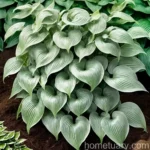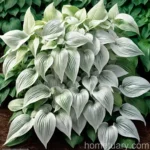The Redflower False Yucca (Hesperaloe parviflora ‘Coral Glow’)
Plants play a crucial role in our environment and bring beauty to our surroundings. They have numerous benefits, including providing oxygen, regulating the climate, and supporting various ecosystems. The redflower false yucca, scientifically known as Hesperaloe parviflora ‘Coral Glow,’ is a striking perennial plant that has gained popularity for its ornamental value and low maintenance requirements. In this comprehensive guide, we will explore the various aspects of the redflower false yucca, including its cultural preferences, uses, care tips, and propagation methods. Additionally, we will delve into common diseases and pests that can affect this plant, along with a botanist’s perspective, fun facts, and valuable external resources for further exploration.
What is the Redflower False Yucca (Hesperaloe parviflora ‘Coral Glow’)?
The redflower false yucca, also known as Hesperaloe parviflora ‘Coral Glow,’ is a visually striking succulent plant that belongs to the Agave family, Agavaceae. It is native to Texas, as well as northeastern Mexico. The plant features grass-like foliage and produces tall spikes of vibrant coral flowers, which give it its distinctive and captivating appearance. This cultivar is a variation of the species Hesperaloe parviflora and is treasured for its ability to thrive in arid conditions and its resistance to pests and diseases.
Key Takeaways
- Botanical Name: Hesperaloe parviflora ‘Coral Glow’
- Common Name: Redflower False Yucca
- Cultivar: Coral Glow
- Family: Agavaceae
- Native Range: Texas, USA and northeastern Mexico
Culture
The redflower false yucca is renowned for its robust nature and ability to thrive in diverse environments. Understanding its cultural requirements is essential for successfully growing and maintaining this plant.
Uses
Ornamental Value: One of the primary uses of the redflower false yucca is its ornamental appeal. The striking coral flowers and unique foliage make it an excellent choice for landscaping, rock gardens, and xeriscaping projects. Its drought tolerance and low maintenance needs further contribute to its popularity in arid and semi-arid regions.
Wildlife Attraction: Apart from its aesthetic value, the redflower false yucca also serves as a nectar source for bees, butterflies, and hummingbirds, making it a valuable addition to pollinator-friendly gardens.
Water
The redflower false yucca is well-suited to dry and well-drained soils. It is highly drought-tolerant and does not require regular watering once established. Overly wet conditions can lead to root rot, so it is crucial to allow the soil to dry out between watering intervals, especially in humid climates or during the plant’s dormant period.
Sunlight
This plant thrives in full sun to partial shade. It prefers at least six hours of direct sunlight daily to encourage healthy growth and prolific flowering. In regions with intense summer heat, providing some afternoon shade can be beneficial to prevent leaf scorch and maintain optimal foliage color.
Fertilizer
The redflower false yucca is a low-maintenance plant that does not necessitate frequent fertilization. In fact, excessive fertilization can lead to lush foliage at the expense of flower production. A balanced, slow-release fertilizer applied in spring can support healthy growth, but it is essential to avoid overfeeding to prevent potential issues.
Soil
Well-drained soil is crucial for the success of the redflower false yucca. It thrives in sandy or gravelly soils and is intolerant of heavy, waterlogged conditions. Amending the soil with sand or gravel can enhance drainage and prevent moisture-related problems. Additionally, maintaining a slightly acidic to alkaline soil pH helps promote the plant’s vitality.
Pruning
Pruning requirements for the redflower false yucca are minimal. Remove any dead or damaged foliage as needed to maintain a neat appearance, and trim back spent flower spikes to encourage continuous blooming. Pruning should be conducted with caution to avoid damaging the plant’s central growing point.
Propagation
From Seeds
Propagation of the redflower false yucca can be accomplished through seeds, although this method requires patience due to the slow growth rate of the plant. To propagate from seeds:
- Collect mature seeds from the plant’s dried flower spikes.
- Sow the seeds in well-draining, sandy soil in containers or directly in the garden bed in early spring.
- Keep the soil consistently moist until germination occurs.
- Transplant seedlings to their permanent locations once they have developed several sets of true leaves.
From Offsets
Another propagation method involves utilizing offsets or “pups” that develop at the base of mature plants. To propagate from offsets:
- Carefully separate the offsets from the parent plant, ensuring that each pup has some roots attached.
- Plant the offsets in a suitable growing medium, keeping them slightly moist until they establish themselves.
From Division
In some cases, mature clumps of the redflower false yucca can be divided to create new plants. Division is best performed in early spring to allow the divided sections to establish before the onset of harsh weather conditions.
Container Popularity
The redflower false yucca’s adaptability makes it well-suited for container gardening. Its ability to thrive in limited spaces, combined with its attractive appearance, has contributed to its popularity as a container plant in various settings, including patios, balconies, and urban landscapes. When cultivating the redflower false yucca in containers, it is important to ensure adequate drainage and use a well-draining potting mix tailored to cacti and succulents.
Container Common Diseases
Despite its resilience, container-grown redflower false yuccas are susceptible to a few common diseases, which can impact their health and appearance.
Disease Diagnosis
-
Root Rot: Overwatering and poor drainage can lead to root rot, manifested by wilting, yellowing foliage, and a foul odor emanating from the soil. Infected plants should be promptly repotted in well-draining soil, and diseased roots should be pruned, if feasible, before replanting.
-
Leaf Spot: Leaf spot diseases, caused by various fungal pathogens, can result in discolored spots or lesions on the plant’s foliage. Provide adequate airflow around plants, avoid overhead watering, and remove affected leaves to mitigate the spread of the disease.
-
Crown Rot: Prolonged exposure to excessive moisture, particularly in cool and humid conditions, can lead to crown rot in container-grown redflower false yuccas. Affected plants may exhibit wilting, yellowing, and collapse of the central growing point. Removing the affected tissue and adjusting watering practices can aid in recovery.
Common Pests
While the redflower false yucca is relatively resistant to pests, especially when compared to other ornamental plants, certain insects may occasionally pose a threat to its well-being.
Botanist’s Tips
Enhancing Pollinator Habitat: To attract and support pollinators, consider planting a variety of nectar-rich flowers alongside the redflower false yucca. This can create a biodiverse and visually captivating landscape while promoting the health of pollinating insects and birds.
Overwintering Considerations: In regions with cold winters, providing some protection to container-grown redflower false yuccas can enhance their survival. Placing containers in sheltered locations, insulating them during extreme cold spells, and reducing watering frequency during the dormant season can all contribute to successful overwintering.
Fun Facts
- The redflower false yucca is not a true yucca, despite its resemblance to yucca plants. It is a member of the Agave family and shares some characteristics with both yuccas and agaves.
- The striking red or coral-colored flowers of the redflower false yucca are a magnet for hummingbirds, adding lively movement and natural beauty to the garden.
Links to External Resources
For additional information on the redflower false yucca, its cultivation, and related topics, the following external resources may be valuable:
- Texas A&M AgriLife Extension – Red Yucca
- Lady Bird Johnson Wildflower Center – Hesperaloe parviflora
- Arizona State University – Coral Glow False Yucca
- University of Florida IFAS Extension – Landscape Plants for Dry Regions
In conclusion, the redflower false yucca (Hesperaloe parviflora ‘Coral Glow’) is a captivating and resilient plant that offers a multitude of benefits to both gardeners and the ecosystem. Its stunning appearance, low maintenance requirements, and ability to thrive in arid conditions make it a valuable addition to landscapes and gardens. By understanding its cultural preferences, utilizing appropriate propagation methods, and addressing potential diseases and pests, gardeners can cultivate and appreciate the beauty of this exceptional plant. Whether grown in the ground or in containers, the redflower false yucca is a standout choice for enriching outdoor spaces with its vibrant presence and abundant wildlife interactions.
With its eye-catching appearance and potential to thrive in diverse environments, the redflower false yucca stands as a testament to the resilience and beauty of plants, while also serving as a beacon for conservation and sustainable landscaping practices.
Through the information provided in this guide and the curated external resources, enthusiasts and horticulturalists alike can further explore the fascinating world of the redflower false yucca, gaining insight into its cultivation, ecological interactions, and varietal diversity.
By embracing these insights and engaging with the captivating nature of the redflower false yucca, individuals can foster a deeper appreciation for sustainable gardening practices and the incredible diversity of plants that enrich our lives.















